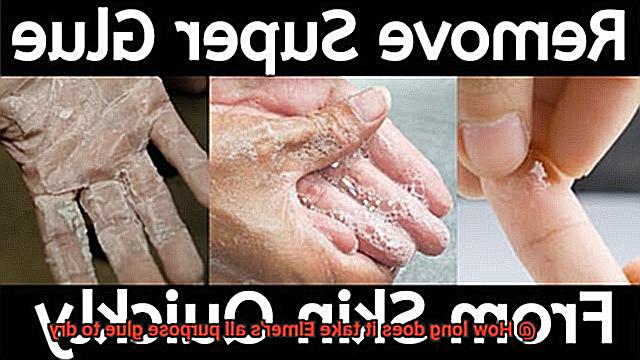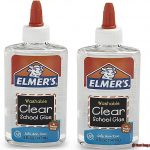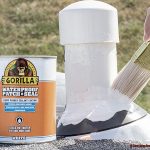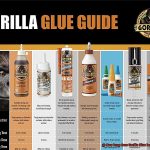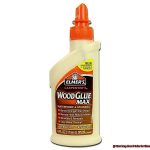Are you tired of waiting for glue to dry? It can feel like an eternity, but it’s worth the wait for a strong bond. If you’re using Elmer’s all-purpose glue, you might be wondering how long it takes to dry. Well, wonder no more.
Elmer’s all-purpose glue is a versatile adhesive that works wonders for crafts, woodworking, and general repairs. But drying time varies depending on several factors such as temperature, humidity, and surface type.
The good news is that Elmer’s all-purpose glue dries quickly – usually within 30 minutes to an hour. However, if you’re working in a humid environment or bonding porous materials like wood, it may take longer.
In this blog post, we’ll explore everything you need to know about Elmer’s all-purpose glue and its drying time. From tips on speeding up the process to troubleshooting common issues – we’ve got you covered.
So, sit tight and read on. By the end of this post, you’ll be a glue-drying pro with a firm grip on your DIY projects.
Factors Affecting the Drying Time of Elmer’s All Purpose Glue
Contents
- 1 Factors Affecting the Drying Time of Elmer’s All Purpose Glue
- 2 How Long Does it Take Elmer’s All Purpose Glue to Dry?
- 3 Tips for Speeding Up the Drying Time of Elmer’s All Purpose Glue
- 4 When Should You Allow Ample Time for the Glue to Fully Cure?
- 5 Benefits of Using Elmer’s Carpenter’s Wood Glue Max
- 6 Other Types of Adhesives and Their Drying Times
- 7 Common Mistakes When Using Elmer’s All Purpose Glue
- 8 Conclusion
The drying time of Elmer’s All Purpose Glue is affected by external factors such as temperature, humidity, and the thickness of the glue layer. By understanding these factors, you can optimize your project’s efficiency and effectiveness.
Temperature is a crucial factor in the drying time of Elmer’s All Purpose Glue. Higher temperatures speed up the chemical reaction that causes the glue to harden and dry faster. In contrast, colder temperatures slow down the drying process. Care must be taken not to overheat the glue, as this may weaken its bonding strength.
Humidity levels also play a significant role in the drying time of Elmer’s All Purpose Glue. High humidity levels slow down the evaporation process, prolonging the drying time. Conversely, low humidity levels accelerate the drying process. To manage humidity levels, use air conditioning or a dehumidifier indoors or add moisture to the air by using a humidifier or spraying water.
The thickness of the glue layer is another essential factor to consider. A thicker layer of glue takes longer to dry as it takes longer for moisture to evaporate. Applying an appropriate amount of glue will ensure optimal drying time. Too much glue may prolong drying time and weaken bonding strength, while too little may not provide enough adhesive power for your project.
How Long Does it Take Elmer’s All Purpose Glue to Dry?
There are multiple factors that can impact the drying time of this popular glue.
Firstly, the type of material being glued together plays a significant role in how long it will take to dry. If you’re gluing paper, it may only take 10-15 minutes for the glue to dry. However, if you’re working with heavier materials like wood or metal, expect several hours for the glue to fully dry and cure.
The climate and temperature of your environment also affect drying time. In warm and dry environments, the glue will dry faster than in cool and humid ones. Keep in mind that the drying time may vary depending on where you live and what season it is.
Lastly, the amount of glue used and how it’s applied can impact drying time. If you apply too much glue or apply it too thickly, expect a longer drying time. On the other hand, if you don’t use enough glue or apply it too thinly, it may not adhere properly.
To sum it up, when using Elmer’s All Purpose Glue, consider these factors and allow ample time for drying and curing before handling or using the glued item. A few tips to keep in mind:
- Use a small amount of glue at a time
- Apply the glue evenly and thinly
- Wait for each layer to dry before adding more
Tips for Speeding Up the Drying Time of Elmer’s All Purpose Glue
Waiting for glue to dry can be a frustrating experience, but with Elmer’s all purpose glue, there are ways to speed up the process. Here are five tips for making the drying time of Elmer’s all purpose glue faster:
Use a Fan or Blow Dryer
One of the quickest and easiest ways to speed up the drying time of Elmer’s all purpose glue is to use a fan or blow dryer. Directing air towards the glued area helps evaporate the moisture in the glue, thus promoting faster drying. However, it is essential to keep a safe distance from the glued surface and use a low setting on your blow dryer to avoid overheating and damaging the glue.
Apply a Thin Layer of Glue
Thicker layers of glue take longer to dry and may not bond as well as thinner layers. To reduce drying time, use a small brush or applicator to apply a thin layer of Elmer’s all purpose glue evenly and thinly. Avoid applying too much pressure when joining surfaces together.
Use Heat
Another effective way to speed up the drying time of Elmer’s all purpose glue is to use heat. Place your project in direct sunlight or use a heat lamp to warm up the glued area. The heat will help evaporate moisture in the glue faster, resulting in quicker drying time.
Add Baking Soda
Adding baking soda to Elmer’s all purpose glue can help speed up its drying time. Mix a small amount of baking soda with the glue before applying it to your project. The baking soda will react with the moisture in the glue, causing it to dry faster.
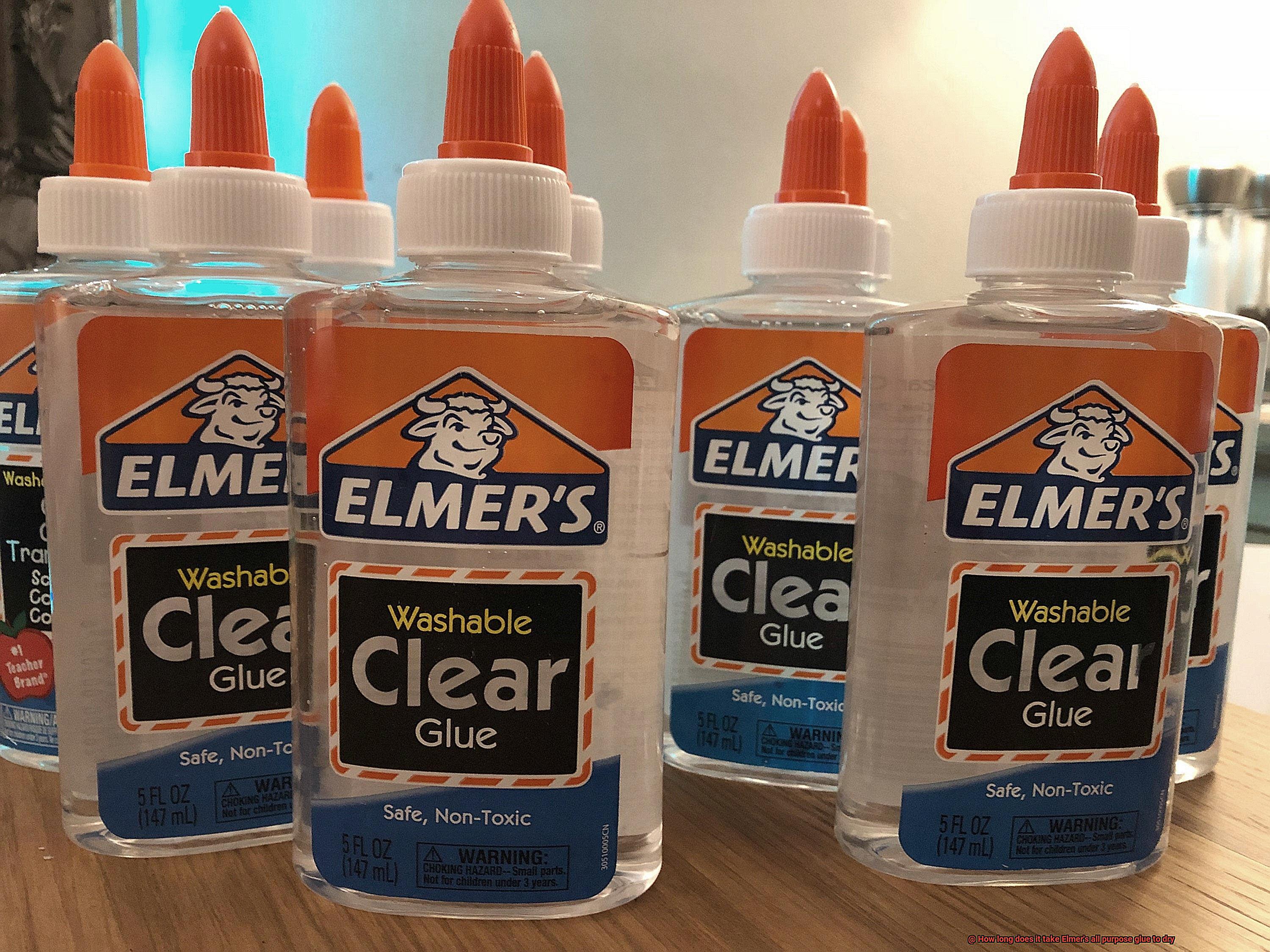
Avoid Humid Conditions
Moisture in the air or on surfaces can significantly slow down the drying process of Elmer’s all purpose glue. Avoid using this adhesive in humid conditions or on damp surfaces. Make sure that both surfaces and surrounding air are dry before applying any glue.
When Should You Allow Ample Time for the Glue to Fully Cure?
Don’t blame the glue just yet. You might not have allowed ample time for it to fully cure. It’s important to remember that the surface of the glue may feel dry to the touch after just a few minutes, but that doesn’t mean it’s entirely cured underneath. To avoid weak bonds and possible project failure, it’s recommended to patiently allow at least 24 hours for Elmer’s all-purpose glue to fully cure.
Several factors can affect how long it takes for glue to cure. The type of material being glued, the temperature and humidity of the environment, and the amount of glue used can all play a role. If you’re working with a particularly absorbent material or in a humid environment, be prepared to wait even longer for the glue to fully set.
It’s crucial to avoid putting any stress or pressure on the glued area during this curing time. If you’re working on a project that requires a particularly strong bond, consider using clamps or other tools to hold the pieces in place while the glue cures. This will help ensure that the bond is as robust as possible.
Benefits of Using Elmer’s Carpenter’s Wood Glue Max
Elmer’s Carpenter’s Wood Glue Max is the perfect solution for all your woodworking needs. This PVA glue goes on white and dries clear, giving you ample time to adjust and position your pieces before it sets.
One of the primary benefits of using this glue is its water-resistant properties. Once the glue has dried, it can withstand exposure to moisture without compromising its strength. Whether you’re working on an indoor or outdoor project that may come into contact with water, Elmer’s Carpenter’s Wood Glue Max is a reliable choice.

But that’s not all – this glue also has a sandable and paintable finish. Once it has dried, it can be sanded down to a smooth finish without damaging the bond’s strength. Moreover, it can be painted over easily, allowing you to customize your projects without worrying about the glue interfering with the final product.
Elmer’s Carpenter’s Wood Glue Max also has a low odor, making it more pleasant to work with than other types of wood glue. And if any excess glue spills or drips during application, don’t worry – it can be easily cleaned up with just soap and water.
Other Types of Adhesives and Their Drying Times
Adhesives are a versatile and useful tool for sticking things together. However, not all adhesives are created equal. Different types of adhesives have varying properties and drying times that make them suitable for different applications. Let’s take a closer look at five common types of adhesives and their respective drying times.
Super glue is known for its fast-drying properties, often setting within seconds of application. However, it may not be as strong as other types of adhesives and may not be suitable for heavy-duty projects. On the other hand, epoxy is a two-part adhesive that requires mixing before application. It can take up to 24 hours to fully cure and harden, although some types of epoxy may have a shorter drying time.
Wood glue is specifically designed for bonding wood surfaces and can take anywhere from 20 minutes to several hours to dry completely, depending on the type of wood glue used. Contact cement is a popular adhesive used in construction and DIY projects, taking around 15-20 minutes to dry before bonding. Lastly, hot glue is often used in arts and crafts projects because it dries quickly within seconds.
It’s important to keep in mind that external factors such as temperature and humidity levels can also affect the drying time of an adhesive. For example, high humidity levels can slow down the drying time of some adhesives. Therefore, it’s always best to follow the manufacturer’s instructions for optimal results.
When selecting an adhesive for your project, it’s important to consider the materials you’re working with and the strength required for the bond. For example, if you’re working with wood, using wood glue would be the best option for a strong bond. Similarly, if you’re working on a construction project, contact cement would provide a strong hold.
Common Mistakes When Using Elmer’s All Purpose Glue
As an expert in this area, I have compiled a list of common mistakes to avoid when using Elmer’s all purpose glue, so you can achieve the best results for your crafting and construction projects.
Firstly, using too much glue is a big mistake. More glue does not equal a stronger bond. Instead, it can cause the glue to take longer to dry and potentially not adhere properly. Apply a thin layer of glue evenly on porous surfaces to avoid this issue.
Secondly, patience is key when it comes to allowing the glue to dry. Elmer’s all purpose glue typically dries in about 30 minutes to an hour, depending on the thickness of the layer applied. However, some people may try to handle or manipulate the glued item before it’s fully dried, causing it to come apart or not adhere properly. So be patient and allow enough time for the glue to fully dry.
Using the wrong type of surface is another common mistake. Elmer’s all purpose glue is designed to work on porous surfaces such as paper, wood, and fabric. If you try to use it on non-porous surfaces such as metal or plastic, it may not adhere properly and could cause the item to come apart.
Lastly, storing the glue properly is important. Elmer’s all purpose glue should be stored in a cool, dry place with the cap tightly closed. If it’s exposed to heat or moisture, it could thicken or become less effective.
Also Read: How Long Does Super Glue Take to Dry?
Conclusion
In summary, Elmer’s all-purpose glue is a multi-functional adhesive that can be utilized for various DIY, woodworking, and general repair tasks. The drying time of this glue may differ depending on several factors such as temperature, humidity, and surface type. However, it typically dries quickly within 30 minutes to an hour.
To achieve the best results when using this adhesive, it’s essential to understand the elements that affect its drying time. Temperature, humidity levels, and the thickness of the glue layer are crucial factors to consider.
Although waiting for glue to dry can be tedious, there are ways to expedite the process with Elmer’s all-purpose glue. Utilizing a fan or blow dryer, applying a thin layer of glue evenly and thinly, using heat sources like sunlight or heat lamps, adding baking soda to the glue or avoiding humid conditions are some tips that can help make the drying time faster.
It’s important to avoid common mistakes when using Elmer’s all-purpose glue such as utilizing too much glue or not allowing enough time for it to fully dry before handling the glued item. By following these tips and avoiding common mistakes, you’ll be able to achieve optimal results for your crafting and construction projects with Elmer’s all-purpose glue.

